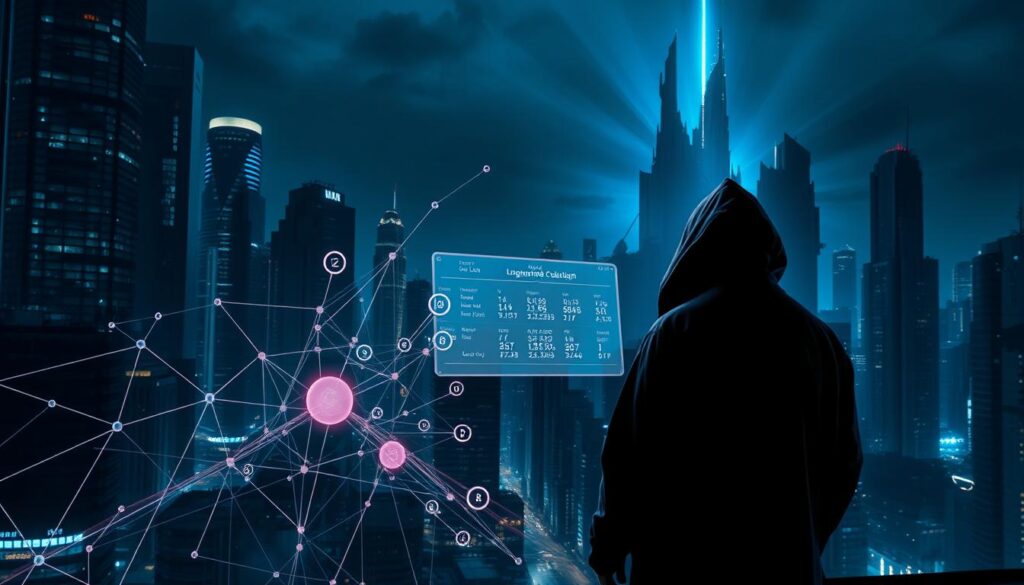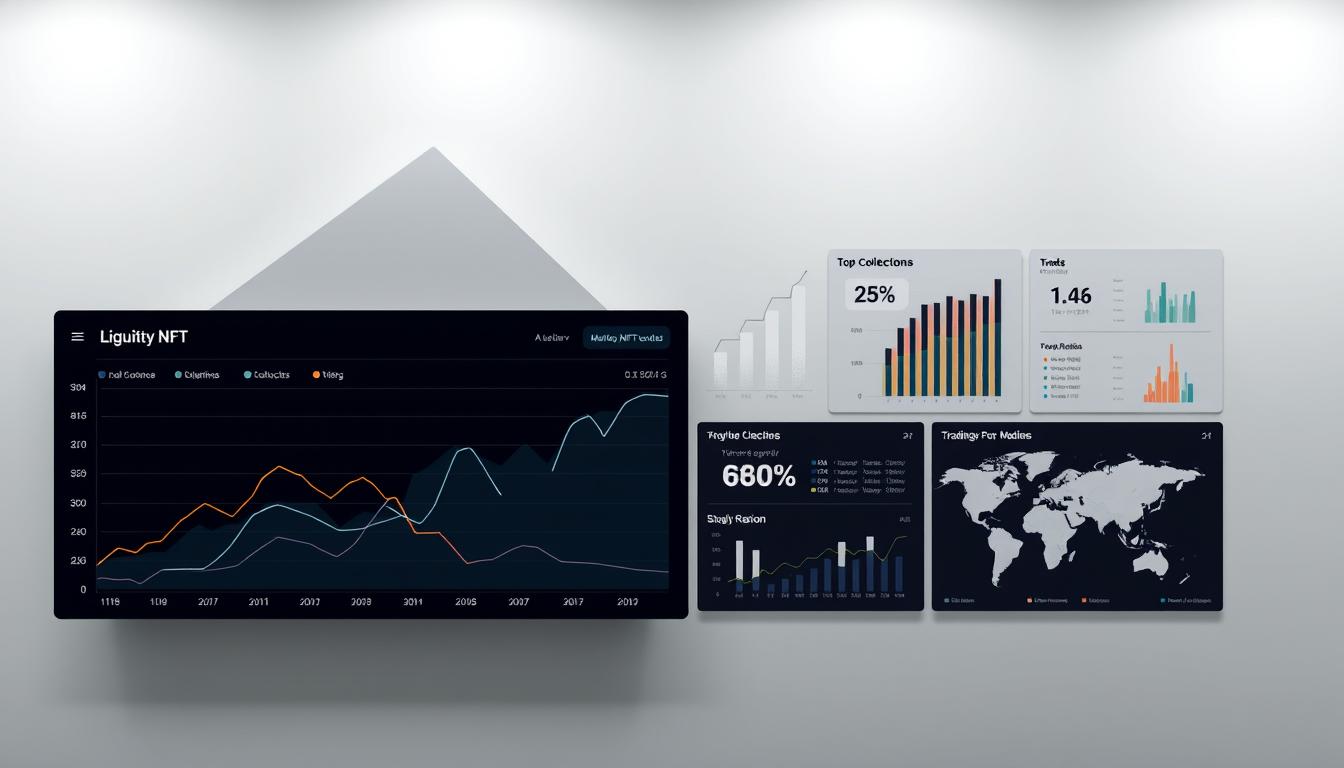Now Reading: NFT Provenance Blockchain Authenticity Verification Explained
- 01
NFT Provenance Blockchain Authenticity Verification Explained
NFT Provenance Blockchain Authenticity Verification Explained

In today’s digital-first marketplace, proving an item’s true origin has become a critical challenge. This comprehensive guide explores how modern technology creates tamper-proof certificates for both physical and digital assets.
The system addresses a massive global issue: the $2 trillion annual counterfeit goods problem. This widespread fraud erodes consumer trust and damages brand integrity across multiple industries.
By creating unchangeable records, this methodology protects creators, collectors, and consumers. It opens new opportunities for digital engagement and value creation beyond traditional paper certificates.
This guide will explore how these digital certificates function and their practical applications transforming art, luxury goods, and collectibles. Understanding this technology is essential for anyone involved with valuable assets.
Key Takeaways
- Modern digital certificates solve the $2 trillion global counterfeit problem
- This technology creates tamper-proof records for physical and digital items
- The system protects creators, collectors, and consumers simultaneously
- It represents an evolution from traditional paper-based certification
- Understanding this methodology is crucial for today’s digital economy
- The technology applies across art, luxury goods, and collectibles markets
- It offers unprecedented transparency and security for ownership verification
Understanding NFT Provenance in the Digital Age
For centuries, the history of an object’s ownership has been a critical factor in determining its worth. This documented journey, its provenance, provides the foundation for trust and value in markets for art and collectibles.
The Concept and Importance of Provenance
Provenance is the comprehensive record of an item’s life. It tracks its path from creation through each successive owner. This chain of custody is vital for establishing legitimacy.
Gaps or doubts in this history create significant problems. Collectors might unknowingly acquire forgeries. Stolen works can remain in circulation. Clear, verifiable records are essential for confidence.
From Traditional Records to Digital Ledgers
Traditionally, this information lived on paper certificates and in centralised databases. These methods were vulnerable to damage, loss, or even forgery. Incomplete record-keeping undermined the entire system.
The shift to digital ledgers represents a fundamental change. Information is now stored in a way that is immutable and transparent. This new approach offers a secure, permanent solution for tracking an item’s past, ensuring its story remains intact and trustworthy for the future.
The Evolution of Blockchain in Art and Collectibles
The path of distributed ledger systems from a specialised financial tool to a vital component of modern asset tracking is a story of significant adaptation. This evolution has opened up new possibilities for securing the history of valuable items.
Historical Overview of Blockchain Technology
Originally designed as the foundation for digital currencies, this technology introduced a revolutionary concept: a decentralised, unchangeable ledger. Its core innovation lies in creating a permanent record that no single entity controls.
This system uses cryptography and a network of computers to validate entries. Once added, information becomes part of an immutable chain. This fundamental shift from centralised databases addressed critical weaknesses in traditional record-keeping.

Impact on Art Authentication and Record Keeping
Visionaries quickly saw the potential of this technology for the art and collectibles market. The industry long struggled with incomplete paperwork and forgery. Platforms like Verisart and Artory began using the blockchain to create secure digital certificates.
This application provides a clear, tamper-proof chain of ownership. It offers museums and collectors greater confidence in the authenticity of their acquisitions. A Deloitte report suggests tokenising illiquid assets like art collectibles could unlock trillions of dollars by 2030.
The table below contrasts the old and new methods of maintaining records for valuable items.
| Aspect | Traditional Paper Records | Blockchain-Based System |
|---|---|---|
| Security | Vulnerable to loss, damage, or alteration | Cryptographically secured and immutable |
| Access | Often held privately, difficult to verify | Transparent and accessible for verification |
| Permanence | Relies on physical preservation | Exists permanently on a distributed network |
This innovation establishes a new standard for trust. It transforms how we verify the history and authenticity of prized possessions.
Mastering NFT provenance blockchain authenticity verification
To truly master the system of digital certificates, one must first grasp its fundamental mechanics and vocabulary. This process transforms how we establish trust for valuable items.
Defining the Process and Key Terminologies
The core activity involves creating a permanent digital record on a distributed ledger. This ledger is maintained by a network of computers, not a single entity.
A crucial step is ‘minting’. This is when an asset’s details are permanently recorded. The resulting unique digital token represents that specific item.
These tokens are governed by smart contracts. These are self-executing agreements that automate rules, like ownership transfers.
How Blockchain Ensures a Tamper-Proof Record
The security lies in decentralisation. For a record to be altered, a majority of computers in the network must agree. This consensus mechanism makes unilateral changes impossible.
Each transaction is cryptographically linked to the previous one, forming a secure chain. This creates a definitive history that is publicly verifiable.
Platforms like The Fine Art Ledger use this by minting multiple tokens for a single artwork. Each token contains the certificate data, making the proof of ownership both robust and accessible from any device.
Leveraging Blockchain for Digital Art and Authenticity
Collectors of digital works can finally access the same level of confidence previously reserved for physical art owners. The unique challenges of digital creation required innovative solutions.
Perfect copies made establishing originality nearly impossible. This technology creates definitive proof where none existed before.
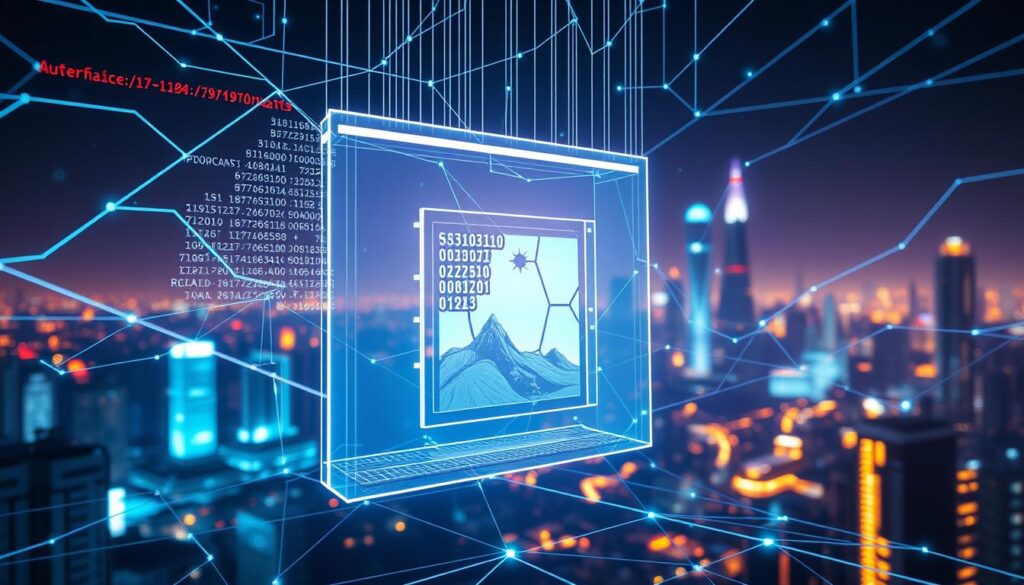
Integrating Digital Art with Immutable Records
Minting transforms digital files into unique assets with protected histories. Each creation receives a permanent digital signature from its maker.
The Beeple sale at Christie’s demonstrated this power. The $69 million valuation was supported by clear proof of originality.
This system establishes verifiable scarcity in a realm of infinite copying. It identifies the authorised original among countless duplicates.
Enhancing Collector Confidence Through Transparency
Open access to ownership histories builds unprecedented trust. Anyone can verify an item’s complete journey without intermediaries.
Smart contracts introduce revolutionary benefits for creators. Automatic royalty payments ensure artists share in future value appreciation.
The entire ecosystem benefits from this transparency. Artists gain new revenue streams while collectors receive guaranteed authenticity.
| Aspect | Traditional Digital Files | Blockchain-Verified Digital Art |
|---|---|---|
| Originality Proof | Virtually impossible to establish | Cryptographically guaranteed |
| Scarcity Control | Unlimited perfect copies | Verifiable limited editions |
| Ownership History | No permanent record | Complete transparent chain |
| Artist Compensation | Single sale only | Automatic resale royalties |
This integration represents a fundamental shift for digital creativity. It provides the missing framework for valuing digital works as serious collectibles.
Mechanics Behind Blockchain-based NFT Authentication
The technical architecture supporting digital certificates represents a fundamental shift in asset registration. These systems combine several innovative technologies to create robust security frameworks.
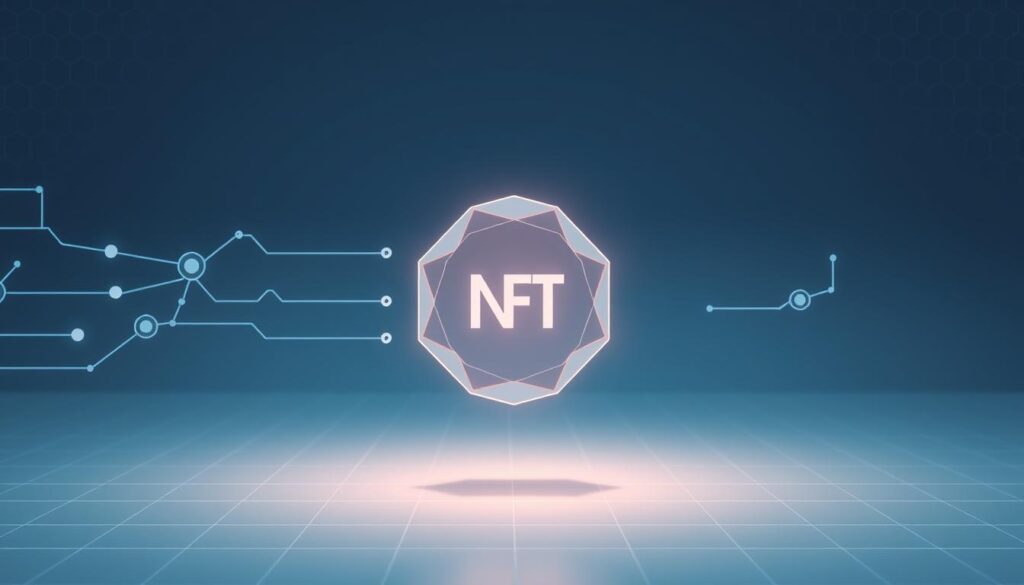
How NFTs Function as Digital Certificates
Non-fungible tokens serve as unique digital certificates for specific assets. Unlike interchangeable cryptocurrencies, each token contains distinctive data about creator identity and ownership history.
These certificates operate on established standards like Ethereum’s ERC-721 protocol. This ensures interoperability across different platforms and marketplaces. The metadata stores crucial information permanently on the distributed ledger.
The Role of Smart Contracts and Consensus
Smart contracts automate the entire authentication process through self-executing code. They enforce rules for uniqueness, transferability, and royalty payments automatically.
The consensus mechanism involves network validation of each transaction. Multiple computers must agree before recording any change to the ownership chain. This decentralised approach creates tamper-resistant security that demonstrates blockchain technology’s impact on modern certification systems.
When minting occurs, the network validates and permanently records the action. This process establishes an immutable proof of ownership that remains accessible to all participants.
Key Benefits of Blockchain Authentication for NFTs
Digital verification methodologies offer unprecedented advantages for creators, collectors, and consumers alike. These systems transform how we establish confidence in valuable possessions.
Proof of Authenticity and Fraud Prevention
The immutable nature of distributed ledgers creates tamper-proof records that counterfeiters cannot replicate. Each genuine item receives a unique digital signature that remains permanently secured.
This approach makes fraudulent activities significantly more difficult to execute. Buyers gain immediate proof of legitimacy without relying on third-party validations.
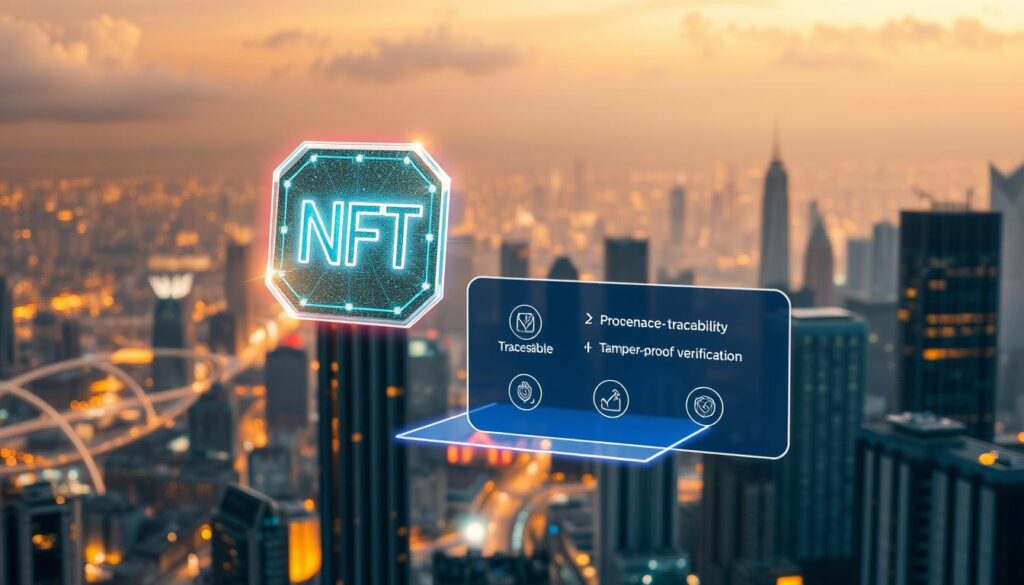
Instant, Mobile Verification and Enhanced Security
Modern systems enable real-time confirmation through simple mobile scanning. Anyone can verify an item’s history instantly using QR codes or digital identifiers.
This accessibility builds consumer trust while providing robust security features. The technology prevents single-point failures that plague traditional certification methods.
These benefits collectively enhance the overall value proposition for digital assets. They create a more transparent and secure marketplace for everyone involved.
Addressing Challenges in NFT and Blockchain Technology
Despite the clear advantages, adopting this innovative system presents several significant hurdles. Stakeholders must navigate complex technical requirements and environmental considerations.
The learning curve represents a major barrier for many users. Artists and collectors often struggle with the technical intricacies involved in implementation.
Environmental concerns and energy consumption
Energy usage remains a critical issue for many networks. Some systems consume electricity comparable to small countries.
This environmental impact raises sustainability questions. Environmentally conscious creators seek more efficient alternatives.
Regulatory hurdles and market volatility
Legal frameworks struggle to keep pace with technological advances. Uncertainty surrounds intellectual property rights and taxation.
Cryptocurrency fluctuations create financial risks for participants. Price swings in popular currencies affect transaction values.
The table below highlights key differences between traditional and digital certification challenges:
| Challenge Type | Traditional Systems | Digital Certification |
|---|---|---|
| Technical Barrier | Basic paperwork understanding | Complex digital literacy required |
| Environmental Impact | Minimal energy consumption | Significant power requirements |
| Regulatory Clarity | Well-established legal frameworks | Evolving and uncertain regulations |
| Market Stability | Relatively stable valuation methods | High volatility in digital markets |
These challenges require thoughtful solutions for sustainable growth. Addressing them will strengthen the entire ecosystem.
Case Studies: Provenance Success Stories in Art and Luxury Markets
Major brands and artists are implementing practical solutions that showcase the power of permanent digital histories. These real-world applications demonstrate how digital certificates create tangible value across creative industries.
Innovative approaches in the art world
Julian Lennon’s ‘Wake Up & Dream’ photography exhibition featured mobile experiences where visitors accessed artwork details instantly. This approach brought new engagement to traditional gallery settings.
The Fine Art Ledger’s technology enabled viewers to verify creator backgrounds through their phones. This innovation transformed how people interact with physical exhibitions.
Luxury brands embracing digital verification
Prestigious names like LVMH, Prada, and Cartier formed the Aura Consortium to develop shared authentication standards. This collaboration shows industry-wide recognition of digital certificates’ importance.
Vacheron Constantin creates digital passports for each timepiece during production. These records provide collectors with complete ownership histories.
Louis Vuitton’s patent filings and Lamborghini’s carbon-fibre artworks demonstrate commitment to blending physical and digital experiences. Gucci’s virtual sneakers and eBay’s marketplace acquisition signal mainstream adoption.
These implementations combat counterfeiting while building customer trust through unprecedented transparency. They represent proven models that others can adapt for their specific needs.
Integrating Mobile Experiences with NFT Verification Platforms
Modern collecting experiences are being transformed by the seamless integration of handheld technology and digital verification systems. This evolution brings unprecedented convenience to art enthusiasts and collectors worldwide.
Real-time access to digital certificates
Platforms like The Fine Art Ledger enable instant interaction with artworks using mobile devices. Visitors can tap their phones near a piece to instantly view certificates and ownership history.
This immediate access to information empowers collectors with comprehensive data. They can review artist backgrounds, creation stories, and exhibition histories on demand.
Enhancing user engagement through mobile technology
The mobile experience extends beyond basic verification to create deep emotional connections. Collectors gain access to multimedia content that enriches their understanding of each work.
This technology transforms casual buyers into enthusiastic collectors. The ability to share verification data with guests strengthens community engagement around collections.
| Feature | Traditional Verification | Mobile Integration |
|---|---|---|
| Access Speed | Requires manual certificate retrieval | Instant tap-and-view functionality |
| Information Depth | Limited to basic certificate data | Comprehensive multimedia content access |
| Portability | Physical documents stay with artwork | Digital access follows collector anywhere |
| Document Management | Paper-based filing systems | Digital vault with upload capabilities |
Collectors can upload purchase records and insurance documents through member dashboards. This creates permanent digital archives that transfer with artworks through generations.
Future Trends in NFT and Blockchain Technology
The landscape for digital asset certification is rapidly evolving with promising developments on the horizon. Deloitte analysis suggests tokenisation could unlock trillions in currently illiquid art and collectibles assets by 2030.
This growth potential indicates massive market expansion. Clearer legal frameworks will be crucial for sustainable development.
Innovation in Ownership Data and Digital Provenance
Technical advancements are addressing current limitations effectively. Ethereum’s transition to proof-of-stake dramatically reduced environmental impact.
Cross-chain protocols enable seamless movement between different platforms. This interoperability expands accessibility significantly.
Artificial intelligence integration enhances attribution and authentication processes. These technologies combine with immutable record-keeping for comprehensive verification.
Market Adoption and Evolving Standards
Fractional ownership models democratise access to high-value artworks. Blockchain-enabled tokenisation divides assets into affordable shares.
Governments are developing clearer frameworks for intellectual property and taxation. This regulatory evolution provides greater certainty for participants.
The technology continues expanding into new asset classes and experiences. Augmented reality integration creates immersive collecting journeys.
| Trend Area | Current State | Future Development |
|---|---|---|
| Energy Efficiency | Some networks have high consumption | Widespread adoption of proof-of-stake mechanisms |
| Market Access | Primarily institutional participation | Fractional ownership enabling broader participation |
| Technical Integration | Platform-specific solutions | Cross-chain interoperability becoming standard |
| Regulatory Framework | Evolving and uncertain guidelines | Harmonised international standards emerging |
These innovations promise to address current limitations while creating new value propositions. The technology’s evolution will drive mainstream adoption across global markets.
Conclusion
As we move towards an increasingly digital economy, the need for reliable asset verification has never been more apparent. The technology discussed throughout this guide offers a transformative approach to establishing trust in valuable possessions.
This system provides unprecedented security and transparency for creators, collectors, and buyers alike. Artists gain protection for their work while collectors receive verifiable proof of ownership. Major brands and auction houses have already embraced these tools with significant success.
While challenges around complexity and regulation persist, ongoing innovation continues to address these limitations. The democratising potential of fractional ownership and accessible platforms opens markets to broader participation.
This represents fundamental infrastructure for the digital age—essential technology that will increasingly underpin how we value and transfer art and collectibles in our interconnected world.
FAQ
What exactly is provenance for digital art collectibles?
Provenance refers to the complete history of an asset, detailing its origin and previous ownership. For digital art, this information is crucial as it confirms the work’s legitimacy and helps establish its value by providing a clear, unbroken chain of custody.
How does a blockchain create a trustworthy record of ownership?
A blockchain is a decentralised, distributed ledger that records transactions in a way that makes them extremely difficult to alter or falsify. Each transaction is time-stamped and linked to the previous one, creating an immutable and transparent history that anyone can access and review.
Why is this technology so important for verifying authenticity?
This innovation tackles issues of fraud and forgery head-on. By providing an unforgeable digital certificate of ownership, it gives collectors and investors greater confidence in the legitimacy of their acquisitions, which is a significant challenge in the traditional art market.
Can the ownership history of a digital asset be transferred?
Yes, when a digital collectible is sold or transferred, the transaction is permanently recorded on the ledger. This process automatically updates the public record, ensuring the new owner’s details are seamlessly added to the asset’s history without any manual intervention.
What role do smart contracts play in this process?
Smart contracts are self-executing agreements with the terms directly written into code. They automate the transfer of ownership and any associated royalties, ensuring that artists receive their share automatically upon each subsequent sale, enhancing transparency for all parties involved.
Are there any environmental concerns associated with this technology?
Some blockchain networks, particularly those using Proof of Work consensus mechanisms, have faced criticism for their high energy consumption. However, many newer platforms are adopting more energy-efficient technologies like Proof of Stake to address these sustainability issues.
How can I verify the authenticity of a digital artwork myself?
Most platforms provide tools that allow you to view the public transaction ledger. By checking the unique token associated with the artwork, you can review its entire history, from creation to its current owner, providing instant proof of its legitimacy.


